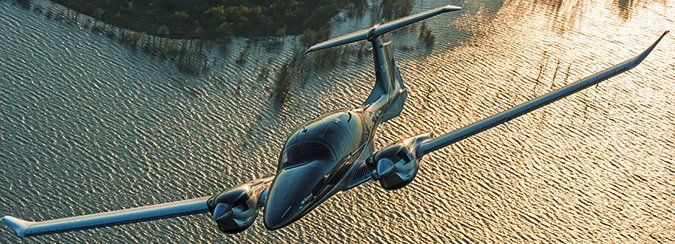I read your recent coverage of Diamond’s DA62 (June 2016) and the airplane looks like a work of art. But, $1.3 million for a machine that barely cruises at 200 MPH, requires sucking on oxygen for serious missions and only has a service ceiling of 20,000 feet?
In my Mooney 252, I once took off from Atlanta, Georgia, right behind a Piper Aerostar 601P and landed right behind it in Washington, D.C. But, while I was using oxygen on the way there, he was flying in pressurized comfort. I bought an Aerostar. The last one was a factory-new model 700P. Flying above the clouds and being called a jet by ATC was always a kick. In the DA62, it seems to me that the kick has to come from the smell of leather. I’m just saying.
Dennis Wisnosky
via email
Actually, you’re slightly underestimating the DA62’s speed, Dennis. The airplane cruises at about 180 knots or we’ll over 200 MPH. As for its lack of pressurization, we think some buyers will find this to be a tradeoff for simplified operation and maintenance—particularly those stepping up from Diamond singles.

Icon Aircraft Sales Agreement: Readers Weigh In
The arrogance of Icon Aircraft is truly astounding. What we are possibly seeing play out before us is the short life of a new aviation firm—from the potential bankruptcy and fire sale of the assets—to a more savvy customer-oriented entrepreneur/investor group.
Icon has a brief and futile future unless it becomes commercial and customer-centered right now and stops kowtowing to the legal department.
Can you imagine Bill Lear approaching the fledgling light jet market with that kind of fearful paperwork when selling the original Lear 24 concept aircraft?
It’s all about management losing control of customer relations and handing off responsibility to the lawyers, who can kill a deal faster than a pilot trapped in a flat spin.
Unfortunately, this has happened before. The initial investors in a lawyer-driven company get burnt.
Consider Eclipse and other aviation startups that initially failed, only to be reconfigured when a customer-centered, middle-of-the-line approach is not forthcoming, especially with regard to legal and operating terms and conditions.
Icon and its A5 could thrive under sensible ownership that’s not saddled by debt, fear or an expensive non-commercial legal department intent on ruining a great idea.
Brian Henry
via email
As an attorney, CFI and an aircraft owner, I would run—not walk—away from Icon’s diabolically written sales contract. A company that comes across as not willing to stand behind its product is a company that I’m not willing to stand behind.
Burt Stevens
Woodbury, Connecticut
We think Icon gets the message loud and clear. Since we covered the controversial sales agreement in our June 2016 issue, Icon has responded to the opposition of the agreement. In a letter issued to the press, Icon CEO Kirk Hawkins said the company is open to changing the buyer’s agreement and “doing what is ultimately right for our owners, the industry and the company.” Hawkins went as far as saying, “If we need to improve our contract to help safely grow our industry, we will.”
Hawkins admitted in a phone conference with the aviation press that the first revision of the 40-page sales agreement was overly complicated and had too much legalese. “It should not have gone out in the form it did without explanation,” he said.
For starters, the new agreement will be shorter, the 30-year airframe life limit will be removed and the subjective “responsible flier clause,” in which buyers sign off as being safe, competent and respectful, has been removed.
We think this is a step in the right direction and commend Icon for addressing the controversy head-on. As many of our readers have expressed, Icon’s success could hang in the balance.
Decathlon Aerobatics
That was a great article on used American Champion Decathlons and Citabrias in the June 2016 issue of Aviation Consumer. There is one clarification related to aerobatics.
The Decathlon is approved for +6 and -5 G maneuvers, which is the same as a Pitts. The restriction is no tail slides and no tumbling maneuvers. For those who must, the permitted -5 G aerobatics makes an outside loop or even an English blunt and inverted spin fair game.
When I bought my new Super Decathlon last year, a friend bought a new Xtreme Decathlon. He tumbled it and had some warranty issues with it popping inspection plates. I flew the Xtreme a few times and prefer the Super. The Xtreme is louder and the stick forces are heavier.
Alan Maurer
via email





